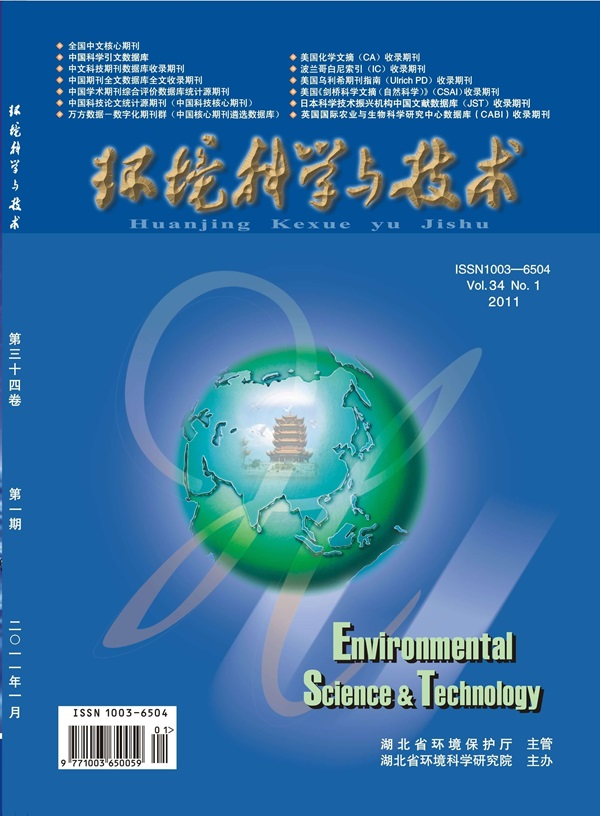Decreased Dimethylsulfide and Increased Polybrominated Methanes: Potential Climate Effects of Microplastic Pollution in Acidified Ocean
IF 10.8
1区 环境科学与生态学
Q1 ENGINEERING, ENVIRONMENTAL
引用次数: 0
Abstract
Microplastic (MP) pollution and ocean acidification (OA) are pressing marine environmental concerns, but their combined impacts on short-lived biogenic climate-active gases and the resulting climate effects remain unclear. To address this gap, a ship-based microcosm experiment was conducted, where OA and MP pollution were simulated under in situ conditions to explore their effects on the production of dimethylsulfide (DMS), bromoform (CHBr3), and dibromomethane (CH2Br2). The results indicated that both MP and OA inhibited phytoplankton growth and DMS concentration, with OA inducing further reductions in the production rate and yield of DMS. MP addition led to extra dissolved organic matter, and the acidified condition enhanced bromoperoxidase activity, both of which promoted the production of CHBr3 and CH2Br2. When OA and MP addition were combined, DMS concentrations decreased by 61%, whereas CHBr3 and CH2Br2 concentrations increased by 132% and 45%, respectively. Based on the results, MP pollution under OA conditions might directly reduce DMS accumulation or decrease the formation of DMS-derived sulfate aerosols by increasing CHBr3 and CH2Br2 levels, which finally weaken DMS’s climate-cooling capabilities. This study underscores the potential for MP pollution in future acidified oceans to exacerbate global warming by disrupting the cycle of marine biogenic climate-active gases.

二甲基硫化物减少和多溴甲烷增加:酸化海洋中微塑料污染的潜在气候影响
微塑料(MP)污染和海洋酸化(OA)是迫在眉睫的海洋环境问题,但它们对短期生物气候活性气体的综合影响以及由此产生的气候效应尚不清楚。为了解决这一空白,进行了一项基于船舶的微观实验,在原位条件下模拟OA和MP污染,以探索它们对二甲硫醚(DMS)、溴仿(CHBr3)和二溴甲烷(CH2Br2)生产的影响。结果表明,MP和OA均抑制了浮游植物的生长和DMS浓度,OA进一步降低了DMS的生产速率和产量。MP的添加导致了更多的溶解有机物,酸化条件增强了溴过氧化物酶的活性,两者都促进了CHBr3和CH2Br2的产生。当OA和MP同时添加时,DMS浓度降低了61%,CHBr3和CH2Br2浓度分别增加了132%和45%。综上所述,OA条件下的MP污染可能通过增加CHBr3和CH2Br2水平直接减少DMS积累或减少DMS衍生硫酸盐气溶胶的形成,最终削弱DMS的气候冷却能力。这项研究强调了未来酸化海洋中MP污染的潜力,通过破坏海洋生物气候活性气体的循环,加剧全球变暖。
本文章由计算机程序翻译,如有差异,请以英文原文为准。
求助全文
约1分钟内获得全文
求助全文
来源期刊

环境科学与技术
环境科学-工程:环境
CiteScore
17.50
自引率
9.60%
发文量
12359
审稿时长
2.8 months
期刊介绍:
Environmental Science & Technology (ES&T) is a co-sponsored academic and technical magazine by the Hubei Provincial Environmental Protection Bureau and the Hubei Provincial Academy of Environmental Sciences.
Environmental Science & Technology (ES&T) holds the status of Chinese core journals, scientific papers source journals of China, Chinese Science Citation Database source journals, and Chinese Academic Journal Comprehensive Evaluation Database source journals. This publication focuses on the academic field of environmental protection, featuring articles related to environmental protection and technical advancements.
 求助内容:
求助内容: 应助结果提醒方式:
应助结果提醒方式:


